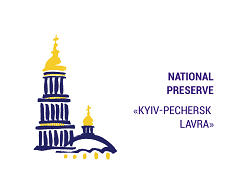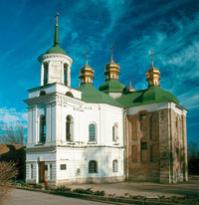Trinity Gate Church
 Built in the early 12th century, Trinity Gate Church was part of the system of ancient defensive constructions of Pechersk Monastery. Today this cultural site is the only monument of the Kyiv-Pechersk Lavra that dates back to the times of Kyivan Rus. The site survived the Mongol invasion of 1240 as well as all onward hardship but remained almost undamaged.
Built in the early 12th century, Trinity Gate Church was part of the system of ancient defensive constructions of Pechersk Monastery. Today this cultural site is the only monument of the Kyiv-Pechersk Lavra that dates back to the times of Kyivan Rus. The site survived the Mongol invasion of 1240 as well as all onward hardship but remained almost undamaged.
In the lower tier of the monument there are the Holy Gates that function as the main entrance to the Kyiv-Pechersk Monastery. In the upper tier of the site there is a small church with 90 square meters (10×9) floor space. This church belongs to the type of temples that prevailed in the Kyivan Rus. It is a single-domed, cross-shaped church that has four internal piers. There is no choir balcony in the church. At first it did not have any narthex and the entrance was arranged on the northern side. During the late Middle Ages, the Trinity Gate Church became the main church of the St. Nikolas Hospital Monastery and served as the alms-house and a hospital for the monks.
During the Baroque era, the exterior of the church went through significant changes. The narthex was attached to the church in its northern side in the end of the 17th century. In the first half of the 18th century the facades were decorated with stucco ornament, the dome became pear-shaped and gilded. In the 20–30’s of the 18th century the interior of the church also changed – the walls were repainted in the Ukrainian Baroque style. A three-level wooden iconostasis was installed. In 1900–1902 the facades of the Trinity Gate Church were painted by Lavra artists who worked under the supervision of Volodymyr Sonin. These frescos, being periodically renovated by restorers, decorate the church up to present.
In the 1920’s, the Trinity Gate Church was used as the center of political education and after the end of the Second World War, in the late 1950’s, it opened its doors to the visitors.









